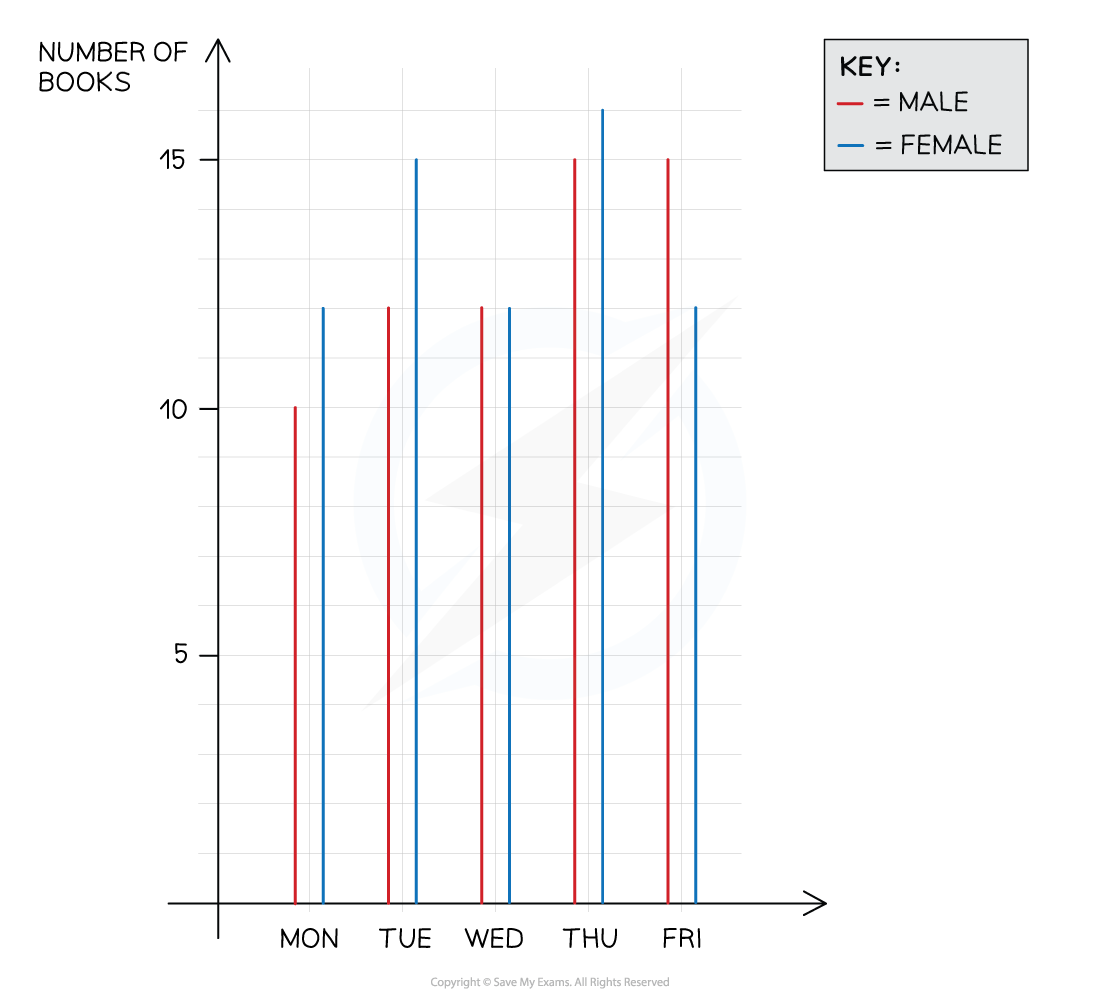Comparing Univariate Graphs (College Board AP® Statistics): Study Guide
Comparing univariate graphs
What is a univariate graph?
In statistics, univariate means there is one variable
This variable may be categorical or quantitative
A univariate graph shows data for one variable
Types of univariate graphs include
bar charts
histograms
dotplots
stem-and-leaf plots
cumulative graphs
A scatterplot is not a univariate graph
because it shows two variables
How do I compare univariate graphs?
You may be given two graphs for two different data sets with the same context
You need to compare four different things:
The centers of the data
either visually or using means, medians and modes
The spread (variability) of the data
either visually or using ranges, interquartile ranges and standard deviations
The shape of the distributions
the skew (or any symmetry)
Any unusual features of the graphs, in particular any
outliers
gaps
clusters
or multiple peaks (unimodal, bimodal or uniform)
Examiner Tips and Tricks
In the exam, always remember to:
use numbers from each graph in your comparisons,
explain clearly which part of the graph you are talking about,
relate any numbers or calculations back to the context of the question.
Examiner Tips and Tricks
If the graphs do not have any unusual features, you should still write "no unusual features" to show the examiner that you have checked for these.
Worked Example
The number of books bought during the opening week of a new bookshop is shown below. The shopkeeper wants to investigate shopping patterns between male and female customers.

(a) Compare the number of books bought by male and female customers during the opening week.
Answer:
You need to compare:
the centers of the data (either a mean, median or mode)
the spread of the data (either a range, interquartile range or standard deviation)
the shape of the distributions (skew, symmetry)
and any unusual features (outliers, gaps, clusters, multiple peaks)
Comparing the centers of the data, the number of books bought by male customers has two consecutive modes on Thursday and Friday whereas the number of books bought by female customers has one mode on Thursday
This suggests that Thursday, in particular, was a popular day
Comparing the spread of the data, the number of books bought by male customers has a range of 15 - 10 = 5 whereas the number of books bought by female customers has a range of 16 - 12 = 4, which is lower than that of male customers
This suggests that male customers have a greater variability in the number of books bought
Comparing the shapes of the distributions, the number of books bought by male customers has a strong negative (left) skew whereas the number of books bought by female customers has a weak negative (left) skew
This suggests that the number of books bought by males and females generally increased over the week
Comparing any unusual features, neither graph has any outliers or gaps
The number of books bought by male customers is always either increasing or staying the same, rising to a peak that spans both Thursday and Friday
The number of books bought by female customers has two peaks (bimodal) which form slight clusters around Tuesday and around Thursday
(b) Give one reason as to why the shopkeeper should not use the data shown to predict future shopping patterns.
Answer:
Reread the sentences at the beginning of the question
This data is for the opening week of the bookshop only
State that this is unrepresentative of a normal week
Give a specific real life example
The data shown is for the opening week of the bookshop, so it is unlikely to be representative of a normal week
Over time, the number of books bought may increase as the bookshop becomes more popular, or decrease if the customers lose interest

Unlock more, it's free!
Did this page help you?